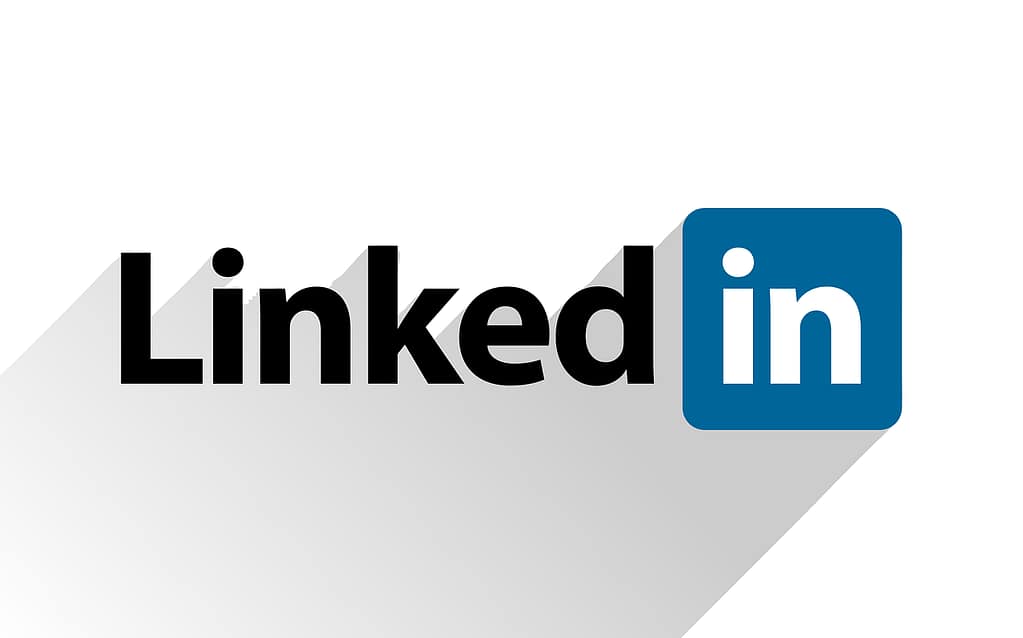Choosing the Best Social Media Platforms for South African Customers in 2025

South Africa boasts a vibrant and rapidly growing digital landscape. With increasing internet penetration and a mobile-first population, social media isn’t just a communication tool; it’s a vital marketplace and engagement hub for businesses aiming to connect with South African consumers. But with numerous platforms vying for attention, the crucial question arises: Which social media platforms are most effective for reaching your target audience in South Africa in 2025?
Choosing the wrong platforms means wasted resources and missed opportunities. Choosing the right ones can unlock significant growth, build brand loyalty, and drive sales. This guide dives deep into the top contenders, analyzing their strengths, weaknesses, and suitability for the unique South African market as we see it in 2025.
This isn’t just a list; it’s a strategic analysis designed to help you make informed decisions. We’ll explore user demographics, popular features, and effective marketing strategies tailored for South Africa, drawing on current trends and projected platform evolution.
(Author Bio Note: While a specific bio isn’t requested here, in a real blog post, you’d insert credentials here, e.g., “By [Your Name], a digital marketing strategist with X years of experience specializing in the African market…” to boost E-E-A-T).
Understanding the South African Social Media Landscape in 2025
Before diving into specific platforms, it’s essential to grasp the context:

- Mobile Dominance: South Africa remains a predominantly mobile-first market. Strategies must be optimized for mobile viewing and engagement. Data costs can still be a barrier for some users, influencing content consumption habits (preference for less data-intensive content or platforms with data-friendly options).
- High Engagement: South Africans are generally active and engaged social media users, using platforms for news, entertainment, communication, and increasingly, product discovery and shopping.
- Diverse Audience: South Africa is incredibly diverse. Language, culture, location (urban vs. rural), and socioeconomic status significantly impact platform usage and preferences. A one-size-fits-all approach rarely works.
- WhatsApp’s Role: While often debated as a ‘social media’ platform, WhatsApp plays an enormous role in communication and increasingly, business interactions (via WhatsApp Business). It cannot be ignored in any SA digital strategy.
Top Social Media Platforms for Reaching South Africans in 2025
Based on current usage patterns, projected growth, and platform capabilities, here are the key players for businesses targeting South Africa:
1. Facebook: The Established Powerhouse

- Overview: Despite global shifts, Facebook retains a massive user base in South Africa across various demographics, making it a foundational platform for many businesses.
- Why it Works in SA (2025):
- Broad Reach: Still boasts one of the largest active user counts in the country, spanning different age groups and locations.
- Mature Ad Platform: Offers sophisticated targeting options based on demographics, interests, behaviour, and location – crucial for navigating SA’s diversity.
- Groups & Community: Facebook Groups remain highly popular for niche communities and local engagement.
- Marketplace: A significant driver of informal e-commerce and product discovery.
- Target Audience: Very broad, but particularly strong among users aged 25-55. Effective for reaching both urban and peri-urban populations.
- Best Use Cases: Brand awareness, community building, lead generation, targeted advertising, local business promotion, driving traffic to websites.
- Considerations: Organic reach continues to be challenging, requiring paid promotion for significant visibility. Content needs to be highly engaging to stand out in crowded feeds.
2. Instagram: The Visual Storyteller

- Overview: Owned by Meta, Instagram thrives on visual content (photos, Reels, Stories) and has a strong, engaged user base in South Africa, particularly among younger demographics.
- Why it Works in SA (2025):
- High Engagement Rates: Especially with visual formats like Reels and Stories, tapping into the desire for entertainment and authenticity.
- Influencer Marketing Hub: South Africa has a thriving influencer scene, and Instagram is its primary playground.
- Shopping Features: Integrated shopping features are increasingly adopted, facilitating direct product discovery and purchase.
- Growing User Base: Continues to attract younger users (Gen Z and Millennials).
- Target Audience: Primarily aged 18-45, with a strong presence in urban areas. Ideal for visually driven brands (fashion, food, travel, lifestyle, beauty).
- Best Use Cases: Brand building, visual product showcases, influencer collaborations, driving e-commerce sales, user-generated content campaigns.
- Considerations: Requires high-quality visual content consistently. Competition is fierce, demanding creativity. Relies heavily on trends (especially Reels).
3. WhatsApp: The Communication Kingpin (with Business Potential)

- Overview: While primarily a messaging app, WhatsApp’s ubiquity in South Africa makes it an essential tool for direct customer communication and marketing.
- Why it Works in SA (2025):
- Near-Universal Adoption: Used by an overwhelming majority of smartphone users across all demographics.
- Direct & Personal: Facilitates one-on-one customer service, inquiries, and targeted promotions (via broadcast lists with user consent).
- WhatsApp Business API: Allows for more sophisticated integrations, chatbots, and managing communication at scale.
- Status Updates: Used similarly to Stories for informal updates and promotions.
- Low Data Usage: Generally perceived as data-friendly for basic messaging.
- Target Audience: Extremely broad – almost everyone with a smartphone.
- Best Use Cases: Customer service, direct sales inquiries, appointment booking, targeted promotions (permission-based), sharing catalogues, internal team communication.
- Considerations: Primarily for direct interaction, not broad brand discovery. Requires careful management to avoid being spammy. Respecting privacy and obtaining consent is paramount. It’s not a traditional ‘feed-based’ social platform.
4. TikTok: The Short-Form Video Sensation

- Overview: TikTok’s explosive growth continues into 2025, capturing significant attention, especially among younger South Africans, with its algorithm-driven feed of short, engaging videos.
- Why it Works in SA (2025):
- Massive Youth Appeal: Dominant among Gen Z and younger Millennials.
- High Virality Potential: Content can gain massive reach quickly, irrespective of follower count.
- Authenticity Focus: Favors raw, creative, and trend-driven content over polished corporate messaging.
- Growing Ad Options: Advertising platform is maturing, offering new ways to reach its engaged audience.
- Target Audience: Primarily 16-30 year olds, but adoption is broadening. Strong in urban and peri-urban areas.
- Best Use Cases: Brand awareness (especially with younger demos), trend participation, user-generated content challenges, influencer marketing, entertainment-driven marketing.
- Considerations: Content needs to be specifically created for the platform’s style (short, vertical video, sound-on). Trends move extremely fast. Measuring direct ROI can sometimes be challenging compared to other platforms.
5. LinkedIn: The Professional Network

- Overview: The go-to platform for professional networking, B2B marketing, and recruitment in South Africa.
- Why it Works in SA (2025):
- Targeted B2B Reach: Unmatched ability to target users based on industry, job title, company size, and skills.
- Credibility & Authority: Ideal for establishing thought leadership and building professional brand trust.
- High-Value Audience: Reaches decision-makers, professionals, and potential high-value B2C clients.
- Target Audience: Professionals, job seekers, B2B decision-makers, affluent consumers. Primarily urban-centric.
- Best Use Cases: B2B lead generation, content marketing (articles, insights), employer branding, recruitment, professional networking, targeting high-income individuals.
- Considerations: Less effective for broad consumer B2C campaigns unless targeting specific professional niches. Requires more formal, value-driven content.
6. X (Formerly Twitter): The Real-Time Conversation Hub

- Overview: X remains relevant in South Africa for real-time news, public discourse, and customer service interactions, though its user base might be less broad than Facebook or Instagram.
- Why it Works in SA (2025):
- Real-Time Updates: Excellent for breaking news, live events, and timely conversations (#Hashtags).
- Customer Service Channel: Many users turn to X for quick responses from brands.
- Niche Communities: Strong engagement within specific interest groups (politics, sports, tech).
- Target Audience: More urban, often media-savvy users, specific interest groups, journalists, public figures. Skews slightly male.
- Best Use Cases: Public relations, real-time customer service, monitoring brand mentions, engaging in relevant conversations, news dissemination.
- Considerations: Fast-paced environment requires constant monitoring. Can be prone to negativity or “cancel culture.” Reach might be more limited compared to Meta platforms or TikTok for broad marketing. Platform direction under current ownership adds uncertainty.
How to Choose the Right Platforms for Your Business
There’s no single “best” platform. The optimal mix depends entirely on your specific business needs. Ask yourself:
- Who is my precise target audience in South Africa? (Age, location, interests, income level, language, online habits). Match this to the platform demographics.
- What are my marketing goals? (Brand awareness, lead generation, sales, customer engagement, website traffic?). Different platforms excel at different goals.
- What type of content can I realistically create? (High-quality video, professional articles, quick visual updates, text-based interaction?). Align your resources and skills with platform requirements.
- What resources (time, budget) do I have? Some platforms require more ad spend (Facebook) or content creation effort (TikTok, Instagram) than others.
- Where are my competitors active and successful? Analyze their strategies, but look for opportunities they might be missing.
Key Strategies for Social Media Success in South Africa (2025)
- Localize Your Content: Go beyond just language. Understand cultural nuances, local humour, relevant events, and South African specificities. Avoid generic global content.
- Embrace Video: Short-form video (Reels, TikToks, Stories) dominates engagement. Invest in creating authentic, mobile-friendly video content.
- Mobile-First Always: Design everything for the mobile screen. Ensure landing pages linked from social media are mobile-responsive.
- Engage Authentically: Don’t just broadcast. Respond to comments, participate in conversations, run polls, and build genuine relationships.
- Consider Data Costs: Where possible, offer data-light content options or use platforms perceived as less data-intensive (like WhatsApp for direct comms).
- Leverage Influencers Wisely: Partner with relevant South African influencers (micro or macro) who align with your brand values and resonate with your target audience.
- Utilize Paid Advertising Strategically: Organic reach is limited. Use targeted ads on platforms like Facebook, Instagram, and increasingly TikTok to reach specific demographics and achieve campaign goals efficiently.
- Track and Adapt: Monitor your analytics closely. See what’s working (and what’s not) on each platform and adjust your strategy accordingly.
Conclusion
Navigating the South African social media landscape in 2025 requires a strategic, informed, and localized approach. While Facebook and Instagram remain foundational for broad reach and visual engagement, the meteoric rise of TikTok among younger audiences cannot be ignored. WhatsApp is indispensable for direct communication and service, while LinkedIn dominates the professional sphere, and X holds its ground for real-time interaction.
The “best” platforms are the ones that most effectively connect your specific business with your specific South African customer. Understand your audience, define your goals, allocate resources wisely, and create authentic, localized content. By doing so, you can harness the power of social media to build meaningful connections and drive tangible results in the dynamic South African market.